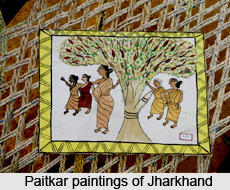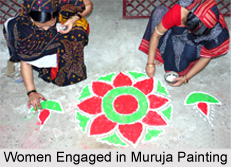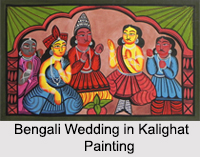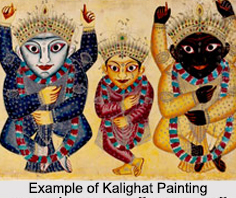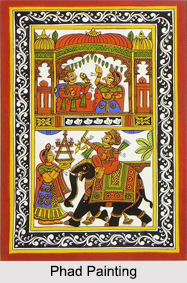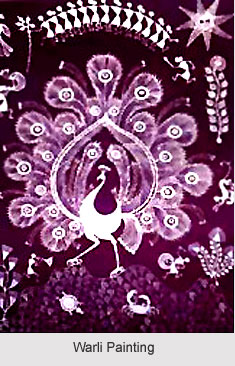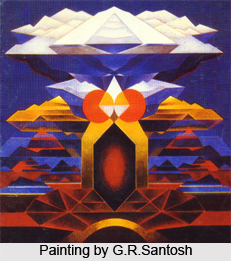 Gulam Rasool Santosh was born in 1929 in Kashmir, to a lower middle class family. After his father`s death Santosh took up several odd jobs like sign board painting, silk weaving and white washing walls to support himself. He began to concentrate on commercial art and thereby became a skilful papier-mƒch‚ artist. In 1954, he won the government scholarship to study Fine Arts under painter N. S. Bendre at the MS University, Baroda.
Gulam Rasool Santosh was born in 1929 in Kashmir, to a lower middle class family. After his father`s death Santosh took up several odd jobs like sign board painting, silk weaving and white washing walls to support himself. He began to concentrate on commercial art and thereby became a skilful papier-mƒch‚ artist. In 1954, he won the government scholarship to study Fine Arts under painter N. S. Bendre at the MS University, Baroda.
Initially he was influenced by geometric shapes and the mysticism of the Kashmir valley. His treatment of snow-clad houses and the backwaters on the banks of Jhelum River reveals his tuned sense of visual perception. It is an example of splendid semi-abstract treatment. He was gradually influenced by cubism and switched over to creating cubist landscapes, a theme for which he is very popular now. Later he was inspired by the Tantra philosophy. He combined the male and female form and finally worked round to paint a pure image of the human form. These paintings were done in transparent colors like red, black and white.
Ghulam Rasool Santosh was moulded by Western ideals in some subtle and direct manner. This was in the beginning of his career. Santosh generally uses a square and a trident to emphasize his Tantric or Shaivite symbol. He uses trident because of his predilection for Shaiva philosophy of Kashmir. He uses black colour to symbolise the darkness and yellow is the colour of knowledge. His paintings convey different things to different people. "Painting to me is like poetry - timeless and universal."- G.R.Santosh. He breathed his last in 1997.
In 1973, he received the Lalit Kala Akademi award and in 1977, the Padma Shree. G R Santosh died in 1997 in New Delhi. He exhibited his paintings in India and abroad. From 1963-66 he gave exhibitions of his paintings in New York, Kabul, Tel Aviv, Los Angeles. In 1950 he had participated in a group exhibition of Indian artists in Eastern Europe. In 1959 he went to Canada, Zurich, Atlanta, Japan, South Florida, New Orleans, San Francisco, Honolulu, Hong Kong, Morte, Singapore, Cannes (France), Bulgaria, Germany and many other foreign countries. In India he gave exhibitions in Kumar Gallery, New Delhi, Kolkata, Chemould Art Gallery, Bombay; Kanika Chemould, New Delhi; Pundole Art Gallery, Bombay; Bistidari, New Delhi; Portrait show, Gallery Chankaya; and in other galleries at different places.
